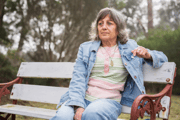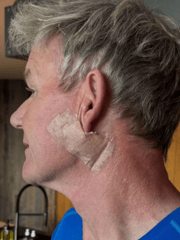Startling new data shows overdose crisis spreading into older age groups
By
Gian T
- Replies 0
When we think about drug overdoses, many picture reckless youth and tragic headlines.
New research, however, shows that older Australians are increasingly at risk.
The findings reveal a worrying shift that challenges long-held assumptions about who is most vulnerable.
A recent release of Australia’s Annual Overdose Report has spotlighted a trend that’s been quietly building for years.
While overdose deaths among people under 30 have actually dropped by about a third since 2001, the opposite is true for older age groups.
In fact, deaths among those aged 50–59 have tripled, and for those aged 60–69, the rate has nearly doubled.
It’s a wake-up call for all of us—especially those in our community who may have thought this was a 'young person’s problem'.
The data paints a clear picture: the median age for unintentional drug-induced deaths is rising across almost all drug types.
Opioids—both illicit (like heroin) and prescription painkillers (such as oxycodone and codeine)—remain the leading culprits. But the faces of those affected are changing.
Between 2019 and 2023, about one-third of all heroin overdose deaths were among people aged 40–49, and one in five were in the 50–59 bracket.
When it comes to pharmaceutical opioids, the numbers skew even older: more than a third of these deaths were people aged 50 or over.
The 40–49 group had the most deaths, but 23 per cent were among 50–59 year-olds, and 15 per cent were 60 and above.
There are several reasons why older adults are increasingly vulnerable to overdose:
The good news is that effective treatments exist. Opioid agonist therapies like methadone and buprenorphine can halve the risk of overdose death and help people regain control of their health.
However, barriers remain: cost, stigma, and inflexible treatment regimes (like daily pharmacy visits) can make it hard for people to access help.
Newer treatments that require only monthly visits may help, but demand still outstrips supply—up to half of those who want treatment can’t get it.
There’s also naloxone, a life-saving medication that can reverse opioid overdoses. It’s now available free and without a prescription at pharmacies and harm reduction services across Australia.
Special resources have been developed for older adults using opioids for pain, including safety plans and risk assessments.
Addressing this growing crisis means rethinking our approach to drug harm. It’s not just a youth issue—overdose risk is now a reality for many in midlife and beyond.
Our health systems need to adapt, making conversations about substance use routine for all ages, and ensuring that stigma and lack of resources don’t stand in the way of help.
Don't hesitate to reach out if you or someone you know is struggling. The National Alcohol and Other Drug Hotline (1800 250 015) is there to help, and there are many other support services available.
 Have you or someone you know been affected by prescription medication or overdose risk? Do you think there’s enough support and information out there for older Australians? We’d love to hear your thoughts and experiences—share your story in the comments below.
Have you or someone you know been affected by prescription medication or overdose risk? Do you think there’s enough support and information out there for older Australians? We’d love to hear your thoughts and experiences—share your story in the comments below.
Read more: Deadly illegal drug reaches another Australian territory. Here's how to protect yourself from this invisible danger
New research, however, shows that older Australians are increasingly at risk.
The findings reveal a worrying shift that challenges long-held assumptions about who is most vulnerable.
A recent release of Australia’s Annual Overdose Report has spotlighted a trend that’s been quietly building for years.
While overdose deaths among people under 30 have actually dropped by about a third since 2001, the opposite is true for older age groups.
In fact, deaths among those aged 50–59 have tripled, and for those aged 60–69, the rate has nearly doubled.
It’s a wake-up call for all of us—especially those in our community who may have thought this was a 'young person’s problem'.
The data paints a clear picture: the median age for unintentional drug-induced deaths is rising across almost all drug types.
Opioids—both illicit (like heroin) and prescription painkillers (such as oxycodone and codeine)—remain the leading culprits. But the faces of those affected are changing.
Between 2019 and 2023, about one-third of all heroin overdose deaths were among people aged 40–49, and one in five were in the 50–59 bracket.
When it comes to pharmaceutical opioids, the numbers skew even older: more than a third of these deaths were people aged 50 or over.
The 40–49 group had the most deaths, but 23 per cent were among 50–59 year-olds, and 15 per cent were 60 and above.
There are several reasons why older adults are increasingly vulnerable to overdose:
- More Health Conditions, More Medications: As we age, it’s common to develop chronic health issues that require ongoing medication. Many older Australians are on multiple prescriptions, which can interact in dangerous ways—especially when opioids, alcohol, or sleeping tablets are involved.
- Changing Body Chemistry: Our bodies process drugs differently as we get older. Slower liver and kidney function means medications can linger longer, building up to risky levels even at doses that were once safe.
- Stigma and Silence: There’s a persistent stigma around substance use in older adults, making it harder for people to ask for help. Health professionals may also be less likely to discuss substance use with older patients, missing opportunities to spot problems early.
- The Ageing Cohort Effect: Many of those at risk today are the same people who began using drugs in the 1980s and 1990s. The median age of people who inject drugs in Australia has risen from 28 to over 43, and the age of first use has shifted from the late teens to the late 20s or early 30s. This means the problem is not so much a new generation, but an older one carrying risks forward.
However, barriers remain: cost, stigma, and inflexible treatment regimes (like daily pharmacy visits) can make it hard for people to access help.
Newer treatments that require only monthly visits may help, but demand still outstrips supply—up to half of those who want treatment can’t get it.
There’s also naloxone, a life-saving medication that can reverse opioid overdoses. It’s now available free and without a prescription at pharmacies and harm reduction services across Australia.
Special resources have been developed for older adults using opioids for pain, including safety plans and risk assessments.
Addressing this growing crisis means rethinking our approach to drug harm. It’s not just a youth issue—overdose risk is now a reality for many in midlife and beyond.
Our health systems need to adapt, making conversations about substance use routine for all ages, and ensuring that stigma and lack of resources don’t stand in the way of help.
Don't hesitate to reach out if you or someone you know is struggling. The National Alcohol and Other Drug Hotline (1800 250 015) is there to help, and there are many other support services available.
Key Takeaways
- New data shows drug overdose deaths among older Australians have risen sharply over the past two decades, with people aged 50 and over now making up a significant proportion of opioid-related deaths.
- The increase in deaths is linked to both illicit and prescription opioid use, with factors such as more health conditions, increased medication use, and the body’s reduced ability to process drugs as we age making older adults especially vulnerable.
- Stigma, lack of accessible treatment options, and under-recognition of substance use in older people make it harder for those at risk to get help, despite proven, effective treatments like methadone and buprenorphine being available.
- Tackling overdose among older Australians requires adapting healthcare responses, expanding treatment access, reducing stigma, and ensuring conversations around substance use and medication safety are routine for all ages.
Read more: Deadly illegal drug reaches another Australian territory. Here's how to protect yourself from this invisible danger








